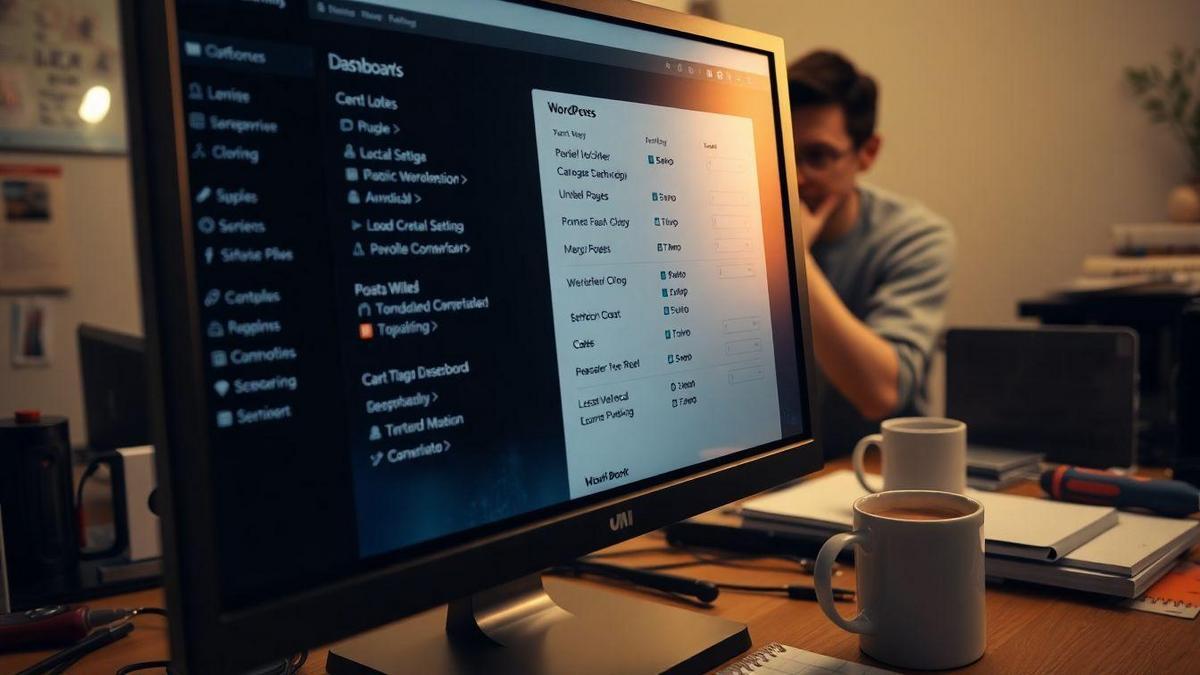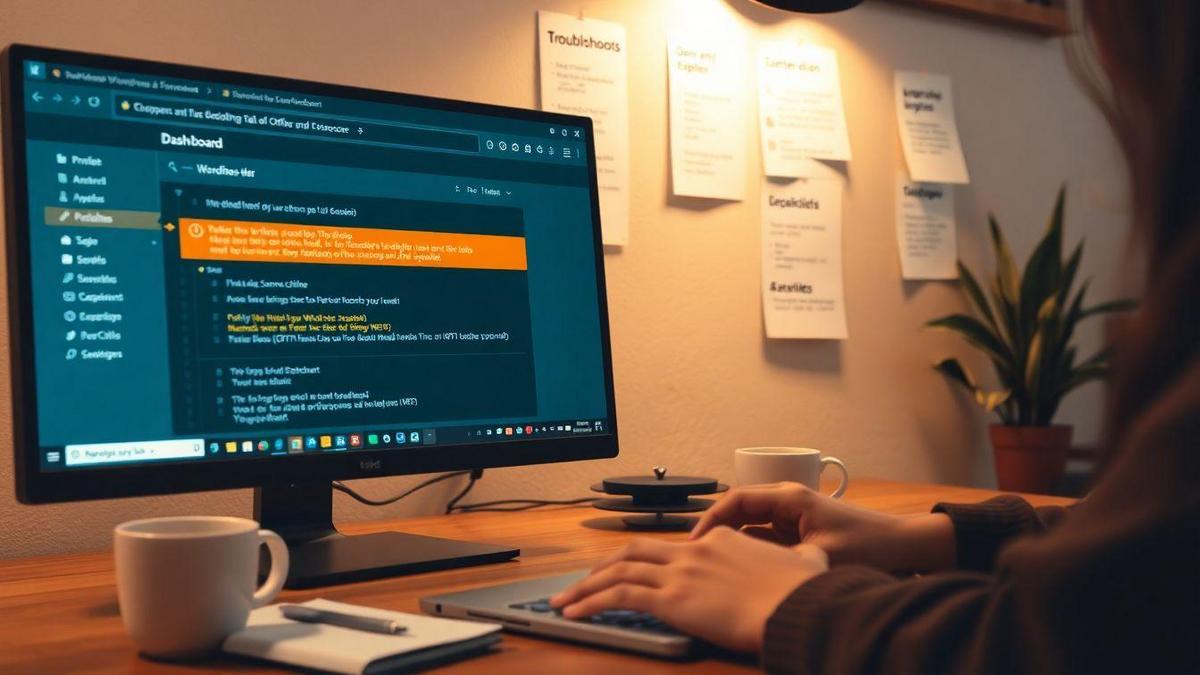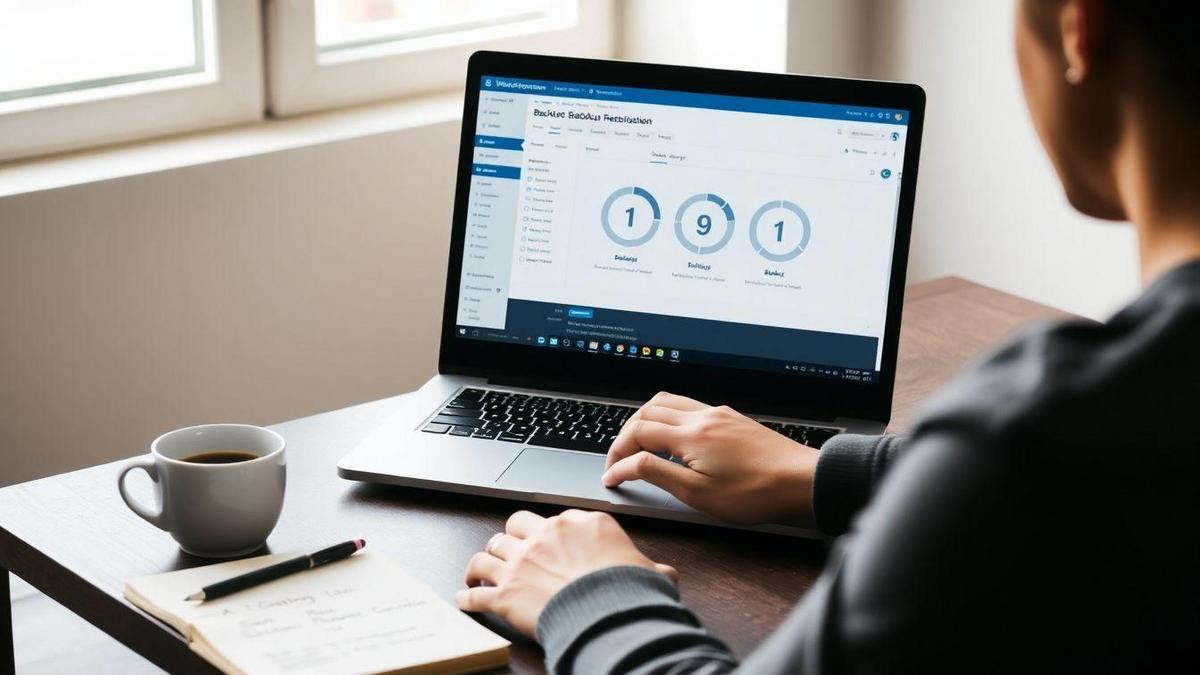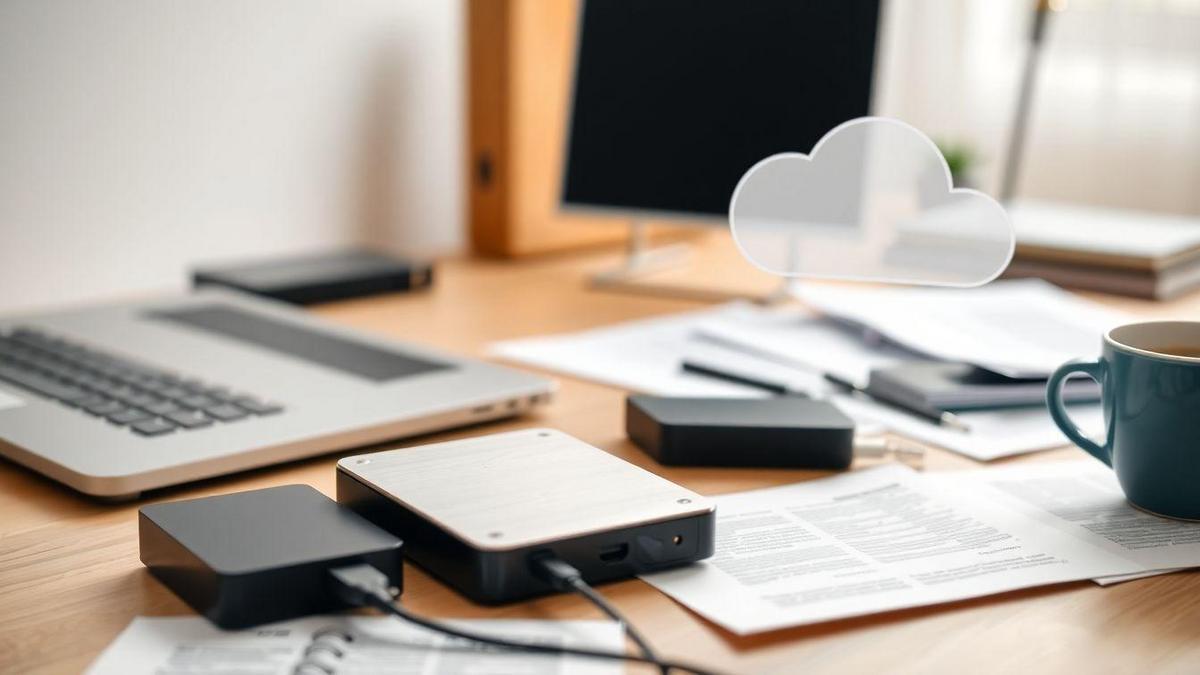If you’re wondering how to recover a misconfigured WordPress site after an update, you’ve come to the right spot. Sometimes, updates can cause unexpected problems that leave your website looking a bit off or not working at all. Don’t worry; we’ll break down the most common issues, easy ways to spot them, and how to fix things up quickly. Plus, we’ll share tips on preventing these hiccups in the future. Let’s dive in and get your site back on track!

Common Misconfigurations After WordPress Updates
Understanding the Most Frequent Issues
When you update your WordPress site, it might not always go smoothly. Some common issues can pop up that leave your site looking a bit off. Here are some frequent problems you might encounter:
- Broken Links: Links can stop working after an update.
- Missing Images: Some images might be gone or not displaying correctly.
- Theme Problems: Your theme might not look right, or some features may not work.
- Plugin Conflicts: Plugins can clash, causing parts of your site to misbehave.
Why These Problems Happen
So, why do these issues arise after an update? Here’s the scoop:
- Compatibility: New updates may not play nice with older themes or plugins.
- Code Changes: Updates can alter how code works, leading to glitches.
- Server Settings: Sometimes, your web host settings don’t align with the new updates.
Key Signs of a Misconfigured WordPress Site
You might be wondering how to tell if your site is misconfigured. Here are some signs to watch for:
| Signs | What It Means |
|---|---|
| Site loading slowly | Possible plugin conflicts or issues |
| Error messages on pages | Code problems or missing files |
| Layout looks different | Theme or CSS issues |
| Features not working | Plugin or theme compatibility issues |
If you notice any of these signs, your site might need a little TLC.
How to Identify a Misconfigured WordPress Site
Simple Steps to Check Your Site
When your WordPress site starts acting up, it’s time to roll up your sleeves and dig in. Here are some simple steps to check for misconfigurations:
- Check Your Site’s Frontend: Open your website in a browser. Look for any error messages or broken links. If something seems off, it might be a sign of trouble.
- Log into Your Admin Dashboard: Go to your WordPress admin area. Check for any alerts or notifications. These can give you clues about what’s wrong.
- Review Your Plugins and Themes: Sometimes, a plugin or theme update can cause issues. Disable them one at a time to see if the problem goes away.
- Inspect Your Site’s Settings: Go to Settings > General. Ensure your site’s URL and email address are correct. A simple typo can lead to big headaches.
Tools to Help You Diagnose Issues
There are some handy tools that can help you pinpoint what’s wrong with your site. Here’s a quick list:
| Tool Name | Purpose |
|---|---|
| Google Search Console | Checks for crawl errors and site visibility. |
| Pingdom | Monitors site speed and uptime. |
| GTmetrix | Analyzes site performance. |
| WP Debugging | Helps identify PHP errors. |
Using these tools can give you a clearer picture of what’s happening behind the scenes.
Using Debugging Tools for Better Insights
Debugging tools are like a magnifying glass for your website. They help you see the tiny issues that can cause big problems. Here’s how to use them effectively:
- Enable Debug Mode: In your wp-config.php file, set define(‘WP_DEBUG’, true);. This will show errors on your site.
- Check Error Logs: Look for logs in your hosting account. They can reveal what’s causing issues.
- Use Browser Developer Tools: Right-click on your site and select “Inspect.” Look for any console errors that pop up.
These steps will help you uncover hidden issues and get your site back on track.

Quick Fixes for Common WordPress Issues
Easy Solutions for Immediate Problems
When you’re facing issues with your WordPress site, it can feel like you’re trying to find your way through a maze. But don’t worry! Here are some quick solutions for the most common problems:
- White Screen of Death: This can happen after an update. To fix it, try disabling your plugins. You can do this by renaming the plugin folder via FTP. If the site comes back, you know a plugin was the issue.
- Error Establishing Database Connection: Check your database credentials in the wp-config.php file. Ensure they are correct. If they are, it might be a server issue, so contacting your host could help.
- 404 Errors: If your pages aren’t found, go to Settings > Permalinks and just click “Save Changes.” This refreshes your permalinks and often resolves the issue.
- Slow Loading Times: Sometimes, a slow site is due to large images. Use a plugin to compress images or try a caching plugin to speed things up.
When to Seek Professional Help
Sometimes, you might hit a wall. If you find yourself stuck after trying the above solutions, it could be time to call in the pros. Here’s when you should consider it:
- Persistent Errors: If your site keeps crashing or showing errors, it’s a sign that something deeper is wrong.
- Security Issues: If you suspect your site has been hacked, don’t try to fix it yourself. Professionals can help secure your site and recover lost data.
- Complex Customizations: If you’re trying to implement changes that require coding or advanced skills, it’s better to leave it to someone who knows what they’re doing.
The Importance of Backups Before Fixing
Before you dive into any fixes, remember this: always back up your site. It’s like having a safety net. If something goes wrong, you can restore your site to its previous state. Here’s a quick checklist for backups:
| Backup Method | Pros | Cons |
|---|---|---|
| Manual Backup | Full control | Time-consuming |
| Plugin Backup | Easy to use | May not cover all files |
| Hosting Backup | Automatic | Limited access to files |
By keeping a backup handy, you’ll save yourself a lot of headaches.
The Role of Plugins in WordPress Misconfigurations
How Plugins Can Cause Issues
Plugins are like the sprinkles on your cupcake—they can enhance your site, but too many or the wrong ones can ruin the whole treat. When you add plugins to your WordPress site, you’re inviting extra features and functionalities. However, not all plugins play nice together. Sometimes, they can clash or even break your site.
Imagine you’ve just updated your favorite plugin, and suddenly, your website looks like a jigsaw puzzle with missing pieces. This can happen if the plugin isn’t compatible with your WordPress version or other plugins you’re using. It’s like trying to fit a square peg in a round hole—it just doesn’t work!
Best Practices for Managing Plugins
To keep your site running smoothly, you need to manage your plugins wisely. Here are some tips to help you out:
- Limit the Number of Plugins: Too many plugins can slow your site down. Aim for essential ones only.
- Choose Trusted Plugins: Always go for plugins with good reviews and regular updates. They’re like the reliable friends you can count on.
- Regularly Update Plugins: Keeping plugins up-to-date is crucial. It’s like getting regular check-ups to stay healthy.
Checking for Plugin Conflicts After Updates
After updating your plugins, it’s important to check if everything is still working. Here’s how you can do that:
- Clear Your Cache: Sometimes, old data hangs around. Clear your cache to see the latest changes.
- Test Your Site: Go through your website and check if all features are functioning properly. Look for any broken links or missing images.
- Disable Plugins One by One: If something’s not right, disable your plugins one at a time to find the troublemaker.
| Action | Description |
|---|---|
| Clear Cache | Remove old data to see updates. |
| Test Your Site | Check for broken links and missing features. |
| Disable Plugins One by One | Identify which plugin is causing the issue. |

Restoring Your WordPress Site to a Previous Version
Understanding WordPress Rollback Options
When your WordPress site goes haywire after an update, it can feel like a storm hit your carefully crafted digital space. But don’t worry! WordPress offers rollback options to help you revert to a previous version. Think of it as hitting the rewind button on your favorite song. You can roll back themes, plugins, and even core files.
Here’s a quick look at some rollback options you can use:
| Option | Description |
|---|---|
| Plugins | Many plugins have built-in rollback features. |
| Themes | Some themes allow you to revert to earlier versions. |
| WordPress Core | Use a backup or a plugin to restore core files. |
How to Use Backups for Restoration
Having a backup is like having an insurance policy for your website. If things go south, you can restore your site to a previous state. There are a couple of ways to get your backups:
- Manual Backups: If you’ve been saving your files and database, you can restore them yourself.
- Backup Plugins: Plugins like UpdraftPlus or BackupBuddy can help automate the process.
Steps to Safely Restore Your WordPress Site
Ready to roll back? Here are the steps to safely restore your WordPress site:
- Access Your Backup: Locate your latest backup file.
- Deactivate Plugins: Before restoration, deactivate all plugins to avoid conflicts.
- Upload Backup: Use your hosting control panel or FTP to upload your backup files.
- Restore Database: If you have a database backup, import it using phpMyAdmin.
- Check Your Site: Once restored, check your site to ensure everything is working smoothly.
By following these steps, you can easily tackle the question of how to recover a misconfigured WordPress site after an update. Remember, a little preparation goes a long way in keeping your site safe!
Troubleshooting WordPress Configuration Problems
Common Configuration Errors to Look For
When you’re diving into the world of WordPress, you might stumble upon some common configuration errors that can throw a wrench in your plans. Here are a few to keep an eye out for:
- White Screen of Death: This dreaded blank screen can leave you scratching your head. It usually means a problem with a plugin or theme.
- Error Establishing Database Connection: This error pops up when your site can’t connect to the database. It’s like trying to enter a locked door without the right key.
- 404 Errors: If your pages are missing, you’ll see this error. It’s like sending someone to a party that doesn’t exist!
- Mixed Content Warnings: If some of your site is secure (HTTPS) and some isn’t (HTTP), you might get warnings. It’s like having a fancy dinner but wearing your pajamas!
How to Fix Configuration Settings
Now that you know what to look for, let’s talk about how to fix these pesky issues. Here’s a simple guide to help you tackle them:
| Error | Solution |
|---|---|
| White Screen of Death | Deactivate your plugins one by one to find the culprit. |
| Error Establishing Database Connection | Check your wp-config.php file for correct database details. |
| 404 Errors | Go to Settings > Permalinks and click “Save Changes” to refresh. |
| Mixed Content Warnings | Update your links to HTTPS or use a plugin to fix them automatically. |
Tips for Effective WordPress Troubleshooting
Here are some handy tips that can help you navigate through configuration issues more smoothly:
- Backup Your Site: Always have a backup before making changes. It’s like having a safety net.
- Use Debugging Mode: Turn on WordPress debugging to see error messages. This can guide you in the right direction.
- Check for Updates: Ensure your WordPress, themes, and plugins are up to date. This can often solve many problems.
- Seek Help from Forums: The WordPress community is vast. Don’t hesitate to ask for help on forums if you’re stuck.

Preventing Future Misconfigurations
Best Practices for Updating WordPress
When you’re updating WordPress, it’s like giving your site a fresh coat of paint. But, if you’re not careful, it can lead to a messy situation. Here are some best practices to follow:
- Backup Your Site: Always create a backup before updating. This way, if something goes wrong, you can restore your site easily.
- Test Updates on a Staging Site: If you have the option, try updates on a staging site first. This helps you see if there are any issues without affecting your live site.
- Read Update Notes: Before hitting that update button, take a moment to read the notes. They often contain important info about changes and potential issues.
- Update Plugins and Themes: Keep your plugins and themes updated as well. They often rely on WordPress updates to function correctly.
Regular Maintenance Tips for Your Site
Regular maintenance is like a tune-up for your car. It keeps everything running smoothly. Here are some tips you should consider:
- Check for Broken Links: Regularly scan your site for broken links. They can hurt your SEO and frustrate visitors.
- Clear Cache: If you use caching plugins, clear the cache after updates. This ensures that your visitors see the latest version of your site.
- Optimize Database: Use tools to clean up your database. This can speed up your site and improve performance.
- Monitor Site Speed: Keep an eye on your site’s loading speed. A slow site can turn visitors away faster than you can say “bounce rate.”
How to Keep Your WordPress Site Healthy
Keeping your WordPress site healthy is all about consistency. Here’s a simple table to help you remember what to do:
| Task | Frequency |
|---|---|
| Backup Your Site | Before every update |
| Update WordPress | As new versions are released |
| Check for Broken Links | Monthly |
| Optimize Database | Quarterly |
| Monitor Site Speed | Monthly |
By following these tips and practices, you’ll be well on your way to preventing future misconfigurations. Remember, a little effort goes a long way in keeping your site in tip-top shape!
Resources for WordPress Troubleshooting
Online Communities and Forums for Help
When you run into trouble with your WordPress site, online communities and forums can be a goldmine of support. Here are some places you can turn to:
- WordPress Support Forums: A great starting point where you can ask questions and find answers.
- Reddit: Subreddits like r/WordPress are filled with users sharing tips and tricks.
- Facebook Groups: Join groups dedicated to WordPress help. You’ll find people eager to share their knowledge.
These platforms are buzzing with folks who have faced similar issues. You can post your problem and get advice from experienced users. Don’t hesitate to jump in!
Recommended Guides and Tutorials
Sometimes, a little guidance can go a long way. Here are some recommended guides and tutorials that can help you tackle common WordPress issues:
- WPBeginner: This site has tons of tutorials for beginners.
- W3Schools: If you want to learn more about coding, this is a great resource.
- YouTube: Video tutorials can be super helpful. Just search “WordPress troubleshooting” and you’ll find a range of options.
These resources break down complex topics into easy-to-follow steps. You can learn at your own pace and get your site back on track.
Finding Reliable WordPress Support
Not all help is created equal. When you need reliable support, here’s how to find it:
- Check Reviews: Look for reviews of support services. This can give you insight into their reliability.
- Ask for Recommendations: Reach out to your network. Personal recommendations can lead you to trustworthy support.
- Test Before Committing: If possible, try a service out before fully committing. A trial can help you gauge their effectiveness.
Having a solid support system is crucial, especially if you’re figuring out how to recover a misconfigured WordPress site after an update.

The Importance of Regular Backups
Why Backups are Essential for Your Site
Imagine waking up one day to find your website has vanished. A hacker, a bad update, or even a simple mistake could wipe everything out. That’s where backups come in. They’re like a safety net for your digital life. Regular backups protect your hard work. They let you restore your site quickly if something goes wrong.
Here are a few reasons why backups are crucial:
- Data Loss: Accidents happen. Backups save your content.
- Hacks: If your site gets hacked, you can restore it.
- Updates Gone Wrong: Sometimes updates break things. Backups let you roll back.
- Peace of Mind: Knowing you have a backup eases your worries.
How to Set Up Automatic Backups
Setting up automatic backups is easier than you might think. You don’t have to remember to do it manually. Here’s how you can do it:
- Choose a Backup Plugin: There are many options available. Some popular ones include UpdraftPlus, BackupBuddy, and Duplicator.
- Install and Activate the Plugin: Go to your WordPress dashboard, find the plugin, and click install.
- Set Your Backup Schedule: Decide how often you want backups. Daily, weekly, or monthly?
- Select Backup Location: Choose where to save your backups. Options include cloud storage like Google Drive or Dropbox.
- Test Your Backups: Make sure your backups work. It’s good to check every now and then.
Choosing the Right Backup Solution for WordPress
Not all backup solutions are created equal. You want one that fits your needs. Here’s a simple table to help you compare:
| Backup Solution | Features | Price |
|---|---|---|
| UpdraftPlus | Cloud storage, scheduling | Free/Premium |
| BackupBuddy | Complete site backup | Paid |
| Duplicator | Easy migration | Free/Paid |
When picking a backup solution, think about your site’s size and your budget. A good backup solution can save you a lot of headaches later.
Frequently Asked Questions
What should I do right after my WordPress site breaks after an update?
First, don’t panic! Check your site to see the error. Then, try to access your WordPress dashboard. If you can, you might fix it quickly from there.
How to recover a misconfigured WordPress site after an update?
You can try restoring a backup. Most hosts keep backups. You can ask your host for help or use a backup plugin if you have one.
Why did my WordPress site break after an update?
Updates can cause conflicts with themes or plugins. Sometimes, an update might not be compatible with older versions, leading to issues.
Can I roll back a WordPress update?
Yes, you can! Use a plugin for rollback or check if your host allows it. Just find the version you want and restore it.
How do I prevent my site from breaking after future updates?
Regular backups are key! Also, update plugins and themes regularly, and check for compatibility before major updates.

Marina is a passionate web designer who loves creating fluid and beautiful digital experiences. She works with WordPress, Elementor, and Webflow to create fast, functional, and visually stunning websites. At ReviewWebmaster.com, she writes about tools, design trends, and practical tutorials for creators of all levels.
Types of articles she writes:
“WordPress vs. Webflow: Which is Best for Your Project?”
“How to Create a Visually Stunning Website Without Hope”
“Top Landing Page Design Trends for 2025”
Why it works:
She brings a creative, accessible, and beginner-friendly perspective to the blog, perfectly complementing Lucas’s more technical and data-driven approach.
